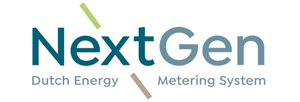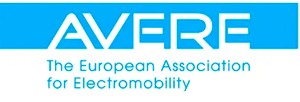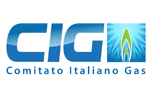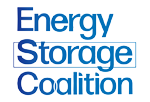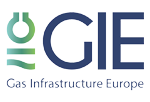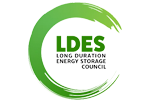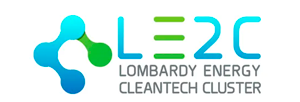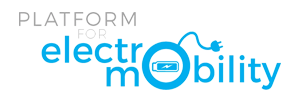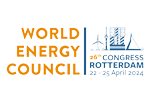Coordinated Energy Infrastructure Planning
)
- Event: Enlit Europe 2024
- Date: 22nd October 2024
- Estimated Read Time: 10-12 minutes
Quick Summary
Hydrogen energy in Europe, coordinated energy systems, and integrated energy infrastructure planning were at the centre of an essential panel at Enlit Europe 2024. Leaders from electricity, gas, and hydrogen sectors urged for a new era of energy planning: one that replaces siloed strategies with shared visions, mandates cross-sector investment frameworks, and aligns national and EU policy for a resilient, decarbonised future.
Speakers stressed the urgency of legally binding cost-benefit analysis (CBA), clearer DSO representation, and technology-neutral planning that acknowledges national variation and fosters cooperation.
Watch the video or read the article below:
Introduction: A Call for Unity in Energy Infrastructure Planning
Coordinated planning isn’t a luxury—it’s a necessity. With Europe’s decarbonisation targets looming large and the transformation of its energy landscape accelerating, integrating the planning of electricity, gas, and hydrogen infrastructure has emerged as a strategic imperative. This was the central theme of a standout session at Enlit Europe 2024, moderated by George Biscardini, Partner at PwC and a seasoned leader in energy infrastructure across Europe and beyond. The session brought together a distinguished panel of experts spanning the energy value chain to discuss the future of integrated energy infrastructure planning and the role each sector—and policy—must play.
The session featured:
- Luís Cunha, Chair of ETIP SNET
- Mark Norton, Lead Author of the ETIP SNET White Paper on Coordinated Planning
- Vincenzo Sienese, CEO of E-Distribuzione and Chair of the EU DSO Entity
- Charles Esser, Secretary General of E.DSO
- Giovanna Zappa, Hydrogen Development Lead at Snam
- Antonio Chello, Representative of ENTSO-E and former top executive at Terna
- Pierre Lorenzi, CEO of Italgas Reti, representing Eurogas
Together, they explored not only the complexities of inter-vector coordination but also the policy, technological, and institutional shifts needed to turn ambition into outcomes.
Setting the Stage: The Vision of ETIP SNET
Luís Cunha opened the session by framing Europe's need for a systemic transformation in planning. As Chair of ETIP SNET (European Technology and Innovation Platform for Smart Networks for the Energy Transition), he underscored that the energy system of the future will depend on breaking down silos between transmission and distribution networks, and across electricity, gas, and hydrogen systems.
ETIP SNET, he explained, is unique among European platforms for its technology-led perspective. It provides scenario-based roadmaps toward 2050, mid-term implementation plans, and immediate technical papers that guide actionable change. Cunha highlighted their latest initiative investigating AI in grid operations as well as the paper at the centre of this discussion: Coordinated Energy Infrastructure Planning for a Decarbonised System.
From Independence to Interdependence: Key Findings from the ETIP SNET White Paper
Mark Norton presented the white paper's core thesis: decarbonisation is forcing previously independent infrastructure systems—electricity, gas, hydrogen, heating and cooling, transport, telecoms, and water—to become deeply intertwined, forming coordinated energy systems that demand new ways of collaboration.
Norton’s key points included:
- Coordinated planning must replace siloed strategies
In the past, electricity networks might address increased demand from electric vehicles or heating with purely electrical solutions. Instead, Norton argued, we now need systems capable of evaluating trade-offs: Could a gas-infrastructure solution meet an electricity shortfall? Could a transport upgrade reduce peak grid load. - Infrastructure investments will need to increase 3–20×
Europe anticipates needing €600 billion for electricity infrastructure by 2030 alone. If all sectors face similar scaling, coordination becomes critical to avoid duplicative spending and delayed timelines across energy infrastructure planning projects. - “Fail to plan, plan to fail”
Without integrated modelling tools, aligned policies, and cost-benefit methodologies that span infrastructure types, Europe risks overbuilding, under-utilisation, and costly delays in decarbonisation. - Common action roadmap and shared standards are vital
The report outlines a progressive workplan spanning short- and long-term goals. It also advocates revisiting and harmonising standards to support cross-sector synergies. - Public acceptance depends on minimised disruption
Infrastructure projects often stall due to opposition. Coordinated, transparent planning can lead to smaller, smarter developments with clear benefits for citizens—a central factor in gaining public trust.
Panel Discussion: Insights Across the Energy Value Chain
The subsequent panel discussion delved into practical experiences and sector-specific challenges, offering real-world perspectives on what it will take to make coordinated planning a reality.
Antonio Chello (ENTSO-E & Terna): A System of Systems Requires Gradual Integration
Representing transmission system operators (TSOs), Chello acknowledged progress in horizontal integration across electric grids in Europe. However, he stressed the growing need for vertical coordination—between TSOs and DSOs—and now, a trilateral approach with gas and hydrogen.
“With hydrogen rising, we must prepare for three-way planning among electricity, gas, and hydrogen operators,” Chello said. While cooperation is advancing, more institutional clarity and leadership are needed, especially on who should lead inter-sectoral efforts. He also noted the importance of sector coupling with non-energy domains like transport and heating within these coordinated energy systems.
Giovanna Zappa (Snam): Hydrogen Requires Deep Electricity-Gas Alignment
Snam, as a gas TSO, is at the frontier of hydrogen development in Italy. Zappa explained that producing green hydrogen via electrolysis entails strong functional dependencies between the power and gas sectors.
Regulations such as hourly and geographical correlation for hydrogen production under the Renewable Fuels of Non-Biological Origin (RFNBO) mandate precise electricity sourcing. This makes it critical for energy planning to synchronise infrastructure timelines for electricity and hydrogen—lest one system outpace the other. She stressed that when it comes to hydrogen energy Europe-wide, investment timelines and permitting cycles must be coordinated to avoid fragmentation and inefficiency.
Vincenzo Sienese (Enel Distribuzione / EU DSO Entity): Missing the Intersectoral Vision
Speaking as both a DSO executive and institutional representative, Sienese made a forceful case for a shared European vision—not just for each sector, but for the complete system transformation.
“We are electrifying at scale, and that’s irreversible. But gas and hydrogen must remain,” Sienese explained. “Yet there’s no European vision on how to balance the carriers.” He criticised the asymmetry between electricity-gas DSO integration (mandated in the Gas Package) and the lack of a similar mandate for TSOs.
For DSOs, he called for mandatory cost-benefit analysis (CBA) frameworks tied to investment decisions: “Otherwise, we risk every actor building for themselves, with citizens footing the over-inflated bill.” Such frameworks, he noted, must become central to Europe’s energy infrastructure planning process going forward.
Pierre Lorenzi (Italgas / Eurogas): DSOs Still Underrepresented
As the head of Italy’s leading gas DSO, Lorenzi voiced concern over disparities in influence between TSOs and DSOs at the EU level. Gas DSOs, he argued, are too often excluded from coordinated planning despite being closest to end users.
“Energy planning has been overly driven by an electricity-centric vision,” he noted. He cited a new Eurogas report showing gas—including renewable and low-carbon variants—remains crucial for Europe’s 2050 targets. He called for stronger, technology-neutral legislation that reflects affordability, consumer choice, and sectoral diversity, especially as hydrogen energy Europe plans scale across borders.
Charles Esser (E.DSO): Planning Must Reflect Market Realities
Esser, drawing on both his role at E.DSO and experience as a former energy regulator, emphasised that network development plans too often treat cross-vector coordination as a passive input rather than an active planning axis. He cautioned against overly-centralised models that might suppress innovation or lock in suboptimal technological pathways.
He also highlighted how regulators themselves can pose coordination barriers: “In some national regulators, electricity and gas teams still barely speak to each other.”
Vision, Pragmatism, and Facts: Building a Future-Proof Framework
Throughout the session, a few recurring themes emerged:
- Cost-Benefit Analysis Is Essential—but Must Evolve
All panellists agreed that CBA frameworks are foundational for de-risking investment, minimising stranded assets, and aligning incentives. However, future CBAs must consider broader factors: energy system efficiency, decarbonisation efficiency, digital integration, and long-term social value, not just upfront capital costs. - Policy Alignment Requires Clarity and Commitment
Multiple speakers echoed the sentiment that sector-specific visions exist—but they are rarely synchronised. Europe needs high-level frameworks that are both visionary and operational, enabling bottom-up planning to align with top-down goals without crushing competitive market dynamics. - Technology Neutrality vs. System-Level Decarbonisation
Pierre Lorenzi passionately advocated for technology-neutral policy, allowing market forces to identify the most efficient solutions. But others stressed that decarbonisation efficiency—not just energy efficiency—must guide infrastructure planning. That may sometimes mean supporting technologies before they’re mature to avoid missing climate targets. - Regional and National Contexts Matter
Antonio Chello and Giovanna Zappa pointed out that national interconnectivity—such as Italy's ties with North Africa—must also shape infrastructure decisions. Tailored approaches for different member states and regions will ensure pan-European plans are flexible, not prescriptive. - Coordination Is More than a Buzzword—It’s Operational
Stakeholders urged for more than strategic reports. They called for joint planning tools, common modelling frameworks, standardised data-sharing protocols, and legislative mandates that force cooperation across traditionally siloed operations—creating functional, coordinated energy systems.
Where Do We Go from Here? Final Reflections and Next Steps
As the session drew to a close, moderator George Biscardini invited panellists to name the one change they most urgently demanded:
- Sienese called for legally-binding CBAs across all infrastructure investments.
- Lorenzi urged stronger DSO representation and greater policy neutrality.
- Zappa stressed the need for technological innovation to make hydrogen viable.
- Chello advocated a multidimensional concept of efficiency—beyond just energy or cost.
- Esser requested regulatory certainty to empower long-term planning.
- Norton reminded the audience of the importance of modelling multiple solutions, not relying on monolithic approaches.
Conclusion: A Blueprint for a Smarter, Cleaner, Better-Connected Future
This Enlit Europe session delivered more than a white paper summary—it marked a pivotal moment in Europe’s maturation toward truly integrated energy infrastructure. Electrification, gas decarbonisation, and hydrogen adoption won’t succeed in isolation. They require a new way of thinking, planning, and governing—one that views complexity not as a bottleneck, but as a bridge to resilience and smarter energy infrastructure planning.
Europe’s energy transformation is already underway. The question is whether its planning—and its planners—can catch up.
Session Takeaways
-
Hydrogen energy in Europe relies on synchronised infrastructure
-
Coordinated energy systems must inform investment decisions
-
Legally binding CBAs are foundational for efficient, just transitions
-
DSOs must have stronger voices in energy planning
-
Regional nuance must be balanced with EU-wide coherence
Final Thought
Europe’s path to decarbonisation runs through coordination. Planning together isn’t a luxury—it’s our only viable route to a clean, fair, and connected energy future.
JOIN US IN 2025: BOOK YOUR PASS


























